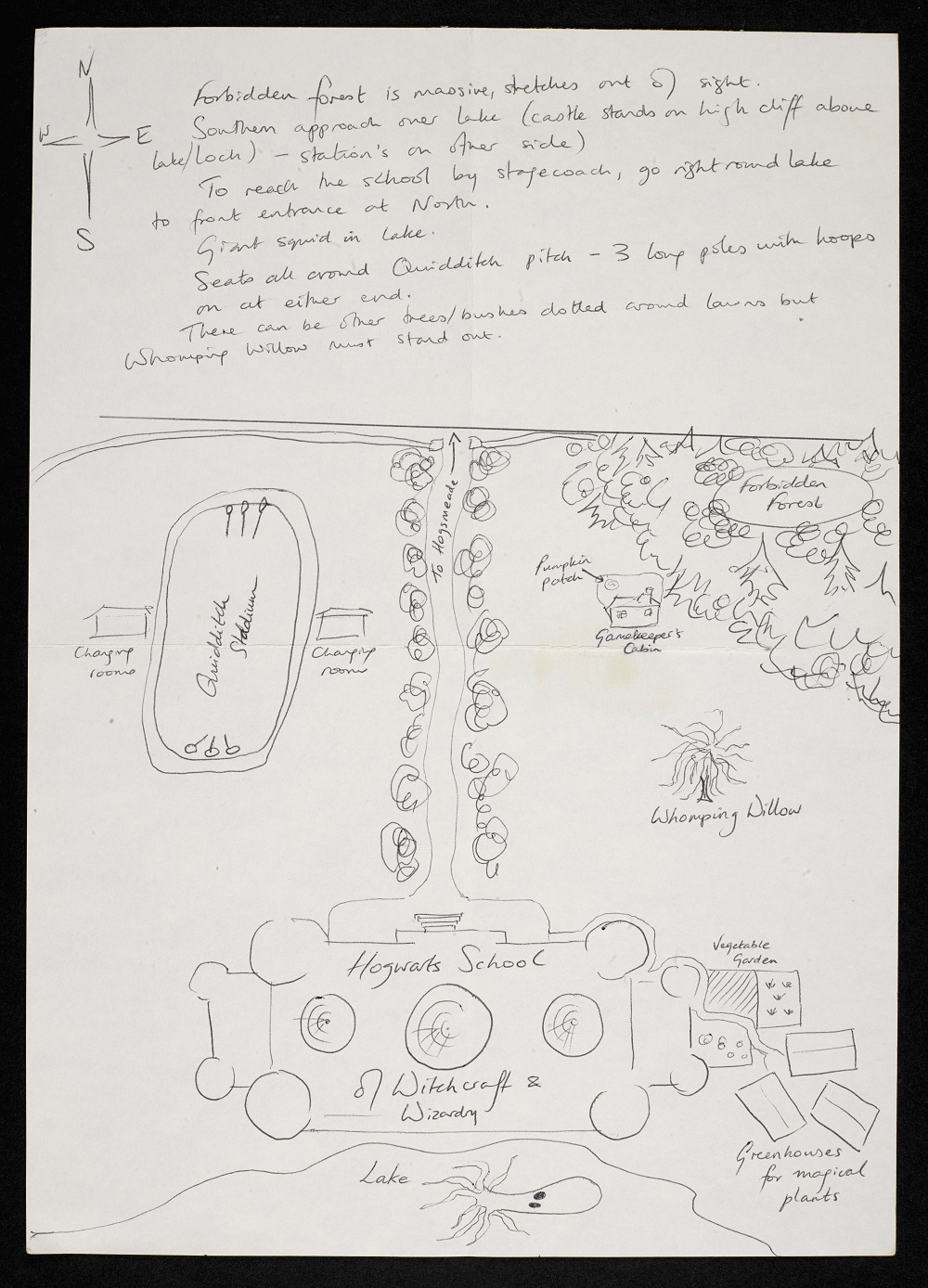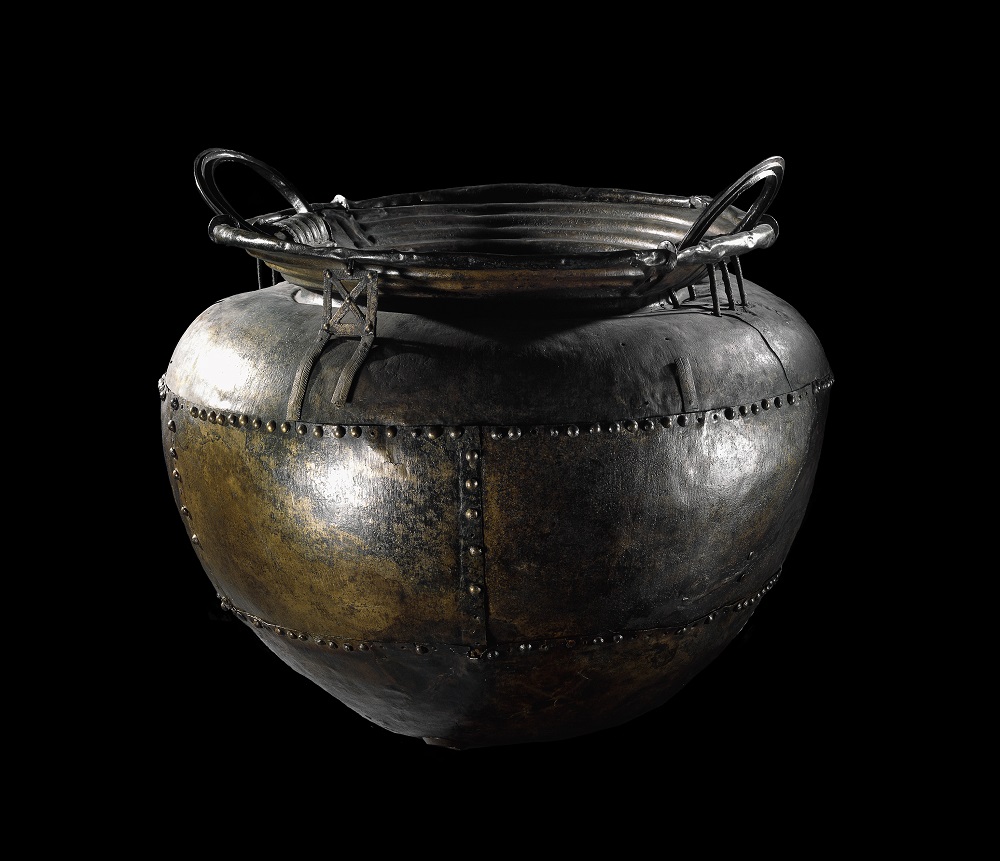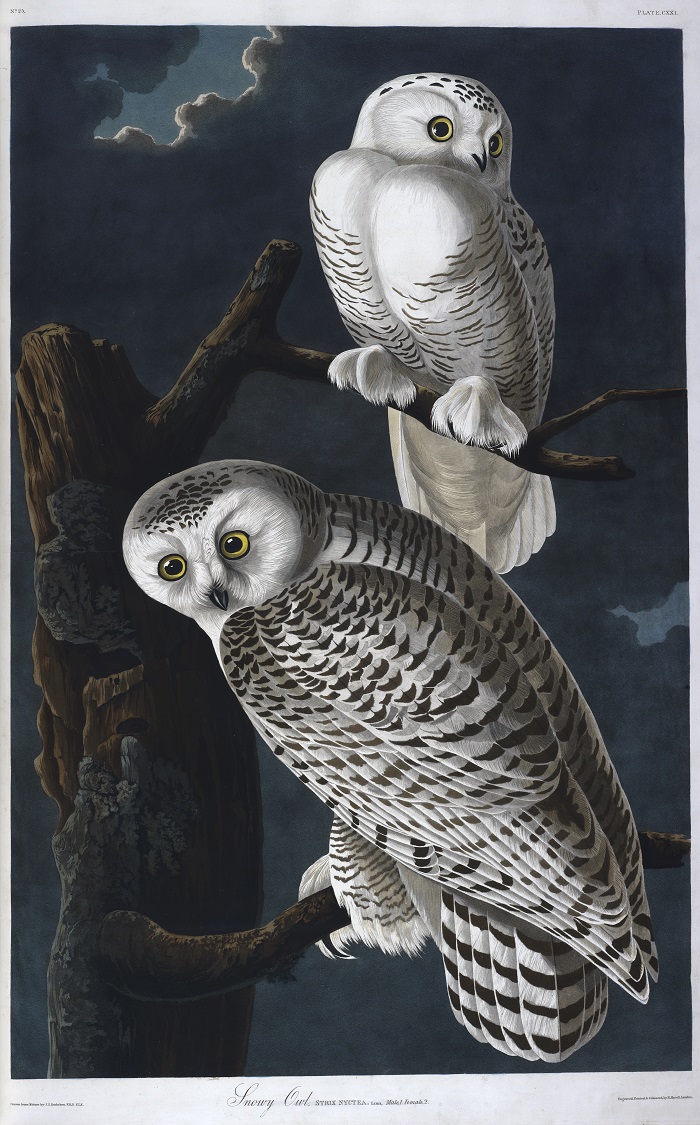Harry Potter a History of Magic Nyc Review Rdddit
Harry Potter has a track record of trickery. He miraculously persuaded a generation of screen addicts to go stuck into hardbacks. Lately he has been luring multiplex junkies into the theatre to see alive wizards on phase. Tin Harry Potter brand it a hat fox by coaxing his fans into a gallery?
Harry Potter: A History of Magic is at the British Library. "I've got to get to the library!" says Hermione Grainger on the within flap of the exhibition volume. Is a trip to this library obligatory?
The bear witness is astutely pitched at younger gallery-goers. For one and a half days a week, you won't be able to go in unless you're in a school party (sections of information technology will exist displayed on panels in 20 public libraries in the Great britain). The bait is a sizeable loan from JK Rowling, including handwritten drafts, proofs, a scribbled map of Hogwarts (pictured beneath © JK Rowling), a guide to the sorting chapeau, a gridded plot plan of Harry Potter and the Order of the Phoenix, on which one panel reads in fanfaring capitals, "DOESN'T REALISE UNTIL There THAT THE HALL CONTAINS PROPHECIES". The real surprise from Rowling is a set of her ain sketches of her characters (including Nearly Headless Nick and the squib Argus Filch). These illustrations were made several years earlier the first book'southward publication. Hermione, it should be noted, has big curls. There is also an annotated first edition of Harry Potter and the Philosopher'south Stone. The story of how she wrote the book, she says, "is written invisibly on every page, legible only to me." Talking of invisible, a sure cloak hangs from a thick hook in a display case.
The real surprise from Rowling is a set of her ain sketches of her characters (including Nearly Headless Nick and the squib Argus Filch). These illustrations were made several years earlier the first book'southward publication. Hermione, it should be noted, has big curls. There is also an annotated first edition of Harry Potter and the Philosopher'south Stone. The story of how she wrote the book, she says, "is written invisibly on every page, legible only to me." Talking of invisible, a sure cloak hangs from a thick hook in a display case.
If this exhibition is to be a gateway drug for Potterheads, they'll need to get used to po-faced gallery labels. I next to a draft of text about Professor Quirrell explains that the writer was "writing in biro, on unlined paper". When in Rome... Never in her wildest fantasies tin Rowling have imagined being exhibited alongside Leonardo da Vinci, only here they both are: a folio from ane of Leonardo'southward notebooks illustrates the sun and moon revolving effectually the World; in this context his mirror writing has a sulphurous whiff of necromancy.
It'southward a bizarre and sometimes jarring experience wandering forth display cases which include textile from the 1990s aslope items of aboriginal vintage. Ane or ii exhibits are staggeringly old. Some Chinese oracle bones are from earlier one thousand BC. There'southward likewise a real cauldron from the Statuary Age, the so-chosen Battersea Cauldron (pictured below © Trustees of the British Museum) which could be more than 3000 years old, alongside a existent broom, a real bezoar, a real mandrake (very creepy). The oldest books engagement back to the start of the concluding millennium: from the 12th century a book offers a remedy for snakebite from a plant known every bit Centaury, and an astronomical miscellany illustrates the dog-shaped constellation Canis Major (aka Sirius). An opening video interview with Rowling sort of disavows almost everything that follows: 95 percent of the magic in her books is made upwardly, she attests. On the other manus, you could argue that 100 per centum of all magic is made upwardly, yet integral to a broad panoply of cultures. The show is divided into sections which match subjects studied at Hogwarts (herbology, potions, care of magical creatures etc). What they cumulatively stress is that Rowling may have invented the spells, but her background knowledge was profound.
An opening video interview with Rowling sort of disavows almost everything that follows: 95 percent of the magic in her books is made upwardly, she attests. On the other manus, you could argue that 100 per centum of all magic is made upwardly, yet integral to a broad panoply of cultures. The show is divided into sections which match subjects studied at Hogwarts (herbology, potions, care of magical creatures etc). What they cumulatively stress is that Rowling may have invented the spells, but her background knowledge was profound.
Thus we encounter the real Culpeper and the real Nicolas Flamel – his 15th-century tombstone is even here. The remarkable 16th-century Ripley Scroll, six metres long, explains how to follow Flamel's pb and create a philosopher'south stone. Non all of this is going to hit the spot with many ten- or fifty-fifty xx-yr olds. But in and among the rather dry text-based exhibits that might struggle to ignite younger minds, there are many such visual coups. Two stunning life-size snowy owls stare out from John James Audubon's 19th-century The Birds of America (pictured below © British Library Board). There'south a beautiful double-page analogy of a reticulated python from 18th-century Holland. Amongst the many apothecary manuals, at that place's Robert Thornton's The Temple of Flora (1799-1807), a vast tome on which the page is open on a livid-looking Drago Arum: "This extremely foetid poisonous institute volition non admit of sober clarification," he advises. In John William Waterhouse'southward highly dramatic painting The Magic Circle, 1886, a wild-eyed enchantress draws a protective circumvolve effectually herself with a wand.
 The global footprint of the collection is impressive: equally well as China and the Americas, in that location are exhibits from as far afield as Federal democratic republic of ethiopia, Islamic republic of iran and Arab republic of egypt, simply also plenty of natural language-in-cheek items borrowed from the Museum of Witchcraft in Boscastle, north Cornwall, which has lent a leaky cauldron dated to 1998. Other inducements are Jim Kay's portraits of characters and places for Bloomsbury's illustrated editions; the highlights are some fetching sketches of winged keys and a dense visualisation of Diagon Alley.
The global footprint of the collection is impressive: equally well as China and the Americas, in that location are exhibits from as far afield as Federal democratic republic of ethiopia, Islamic republic of iran and Arab republic of egypt, simply also plenty of natural language-in-cheek items borrowed from the Museum of Witchcraft in Boscastle, north Cornwall, which has lent a leaky cauldron dated to 1998. Other inducements are Jim Kay's portraits of characters and places for Bloomsbury's illustrated editions; the highlights are some fetching sketches of winged keys and a dense visualisation of Diagon Alley.
If the Potter phenomenon is a triumph of fantasy over rationalism, its magical world is rooted in real fears and beliefs. In that location are images of witches from medieval England and werewolves in a 16th-century book from Strasbourg are said to enjoy the taste of children. A 17th-century pharmaceutical manual depicts 5 types of unicorn including "iii unidentified breeds" and recommends the horns equally an antidote to poisons.
But not all creatures were magical. From 1699 to 1701 a naturalist chosen Maria Sybilla Merian became the first woman ever to atomic number 82 a scientific expedition. In Surinam she encountered a behemothic spider that feasted on birds, and illustrated them beautifully. When she got home to Amsterdam she was discredited by male peers who dismissed her a fantasist (her findings were accepted only in 1863). There's zero wrong with being a fantasist, of course, as this weirdly wonderful exhibition demonstrably proves.
- Harry Potter: A History of Magic at the British Library until 28 February 2018. Information technology travels to the New-York Historical Club in October 2018
- More than visual art reviews on theartsdesk
@JasperRees
Source: https://theartsdesk.com/visual-arts/harry-potter-history-magic-british-library-review-weirdly-wonderful
Belum ada Komentar untuk "Harry Potter a History of Magic Nyc Review Rdddit"
Posting Komentar